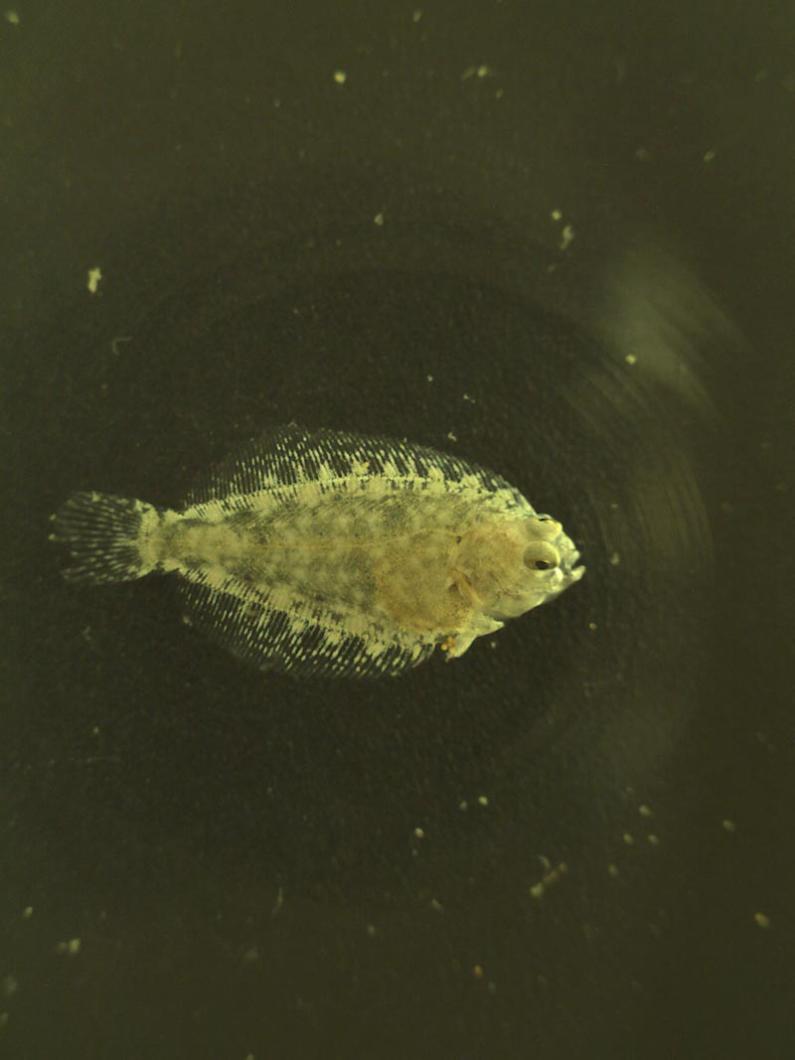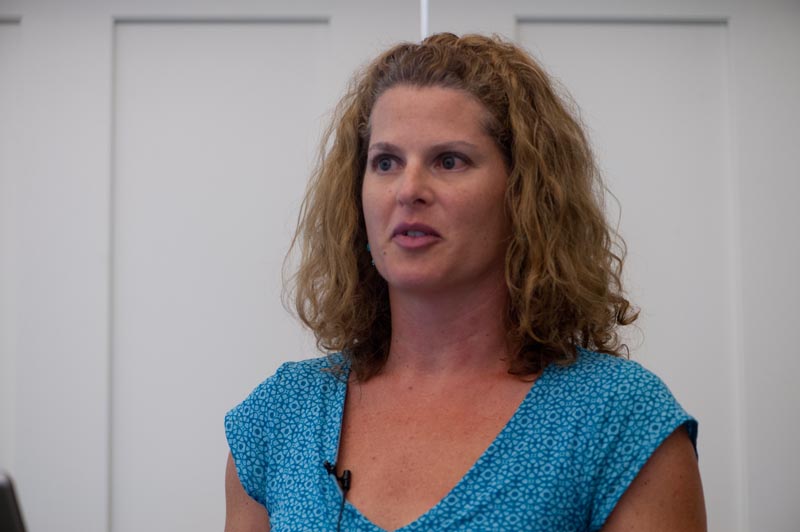The thousands of baby flounder being raised at the Wampanoag Tribe’s Aquinnah hatchery will be released late this summer at Clam Point in Nashaquitsa Pond, part of the Menemsha Pond system, according to the lead scientist of the two-year project to raise winter flounder in captivity and release them into safe waters.
Elizabeth A. Fairchild, of the University of New Hampshire, told a gathering last week at Chilmark Public Library that the Aquinnah project, overlooking Menemsha Pond, has been a great success thusfar in raising the tiny fish.
The $308,000 project is funded by the National Oceanic and Atmospheric Adminstration. In the first year, water samples were taken to see if Menemsha and Lagoon ponds can still support juvenile winter flounder. Mrs. Fairchild said the samples revealed a number of creatures in the pond as potential food: sand shrimp was the most common creature, followed by bay scallops, mud crabs, pipe fish, killifish and mummichugs. In over a year of sampling, the study discovered at least 47 species of animals of interest in the ponds, including 27 finfish.
The survey also discovered that green crabs, a known winter flounder predator, could be found in both ponds.
But in the Clam Point area, there seemed to be a reduced population of predators.
Mrs. Fairchild said in order to be assured of a “robust” start for these juvenile fish, Clam Point possesses both the most food for the young fish and the fewest predators of all sampled areas.
Winter flounder are a severely depleted stock and the subject of considerable regulatory management. Mrs. Fairchild said that in order to protect what fish still remain, the federal government has imposed fishing restrictions and even created protected areas offshore where fishermen can’t fish. Yet thusfar there has been little positive result.
The winter flounder project on the Vineyard is an essential step towards restoring this and other stocks, Warren Doty, president of the Martha’s Vineyard/Dukes County Fishermen’s Association told the audience. When fisheries regulatory management isn’t working to bring about the restoration of an over-fished stock, Mr. Doty said stock restoration is necessary and proactive.
After completion of the sampling, three Menemsha fishing boats went out in March looking for adult winter flounder to spawn. They brought in 198 live, ripe adult fish. The project shifted to hatching and raising juvenile winter flounder. The fishing boats found the fish south of Noman’s Land. Once the fish arrived at the hatchery, Mrs. Fairchild said the animals were naturally brought to spawn the baby fish.
All the animals were resilient and responded well in the tanks. The project calls for the raising of 50,000 juveniles; Mrs. Fairchild said she will have the numbers later in the project.
Sometime in late August, when the fish are considerably larger they, will be released. Some will be tagged.
This week the fish are about 79 days old and measure less than a half inch in size. They were fed rotifers (microscopic food) raised on the second floor of the hatchery. Recently the tiny flounder took on the look of little fish. They are now being fed food pellets.
Once the fish are released from the hatchery, Mrs. Fairchild said they will likely spend the fall in Menemsha Pond and make their way out to sea in December. Winter flounder spend most of their lives swimming in the open ocean and they spend their time feeding in coastal waters. As adults, they come into the same waters where they were born to spawn again.
The two-year project ends in the fall, but Mrs. Fairchild said they have applied for additional funds to take the project farther along. She said they want to know how well this year’s fish survive. They want to continue to monitor the ponds and do another spawning next spring. Word of grant approval won’t likely arrive until late summer.
After the talk, Bret Stearns, natural resource director of the Wampanaog Tribe, said that the project has been a win for everyone involved. He said this week that one of the tribe’s students has joined the project as an intern. “This project, even on a small scale, is an exciting endeavor. Saltwater fish population enhancement may very well be what saves our fisheries,” he said.







Comments
Comment policy »